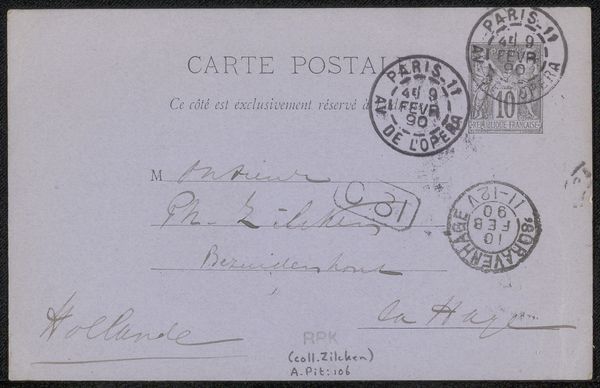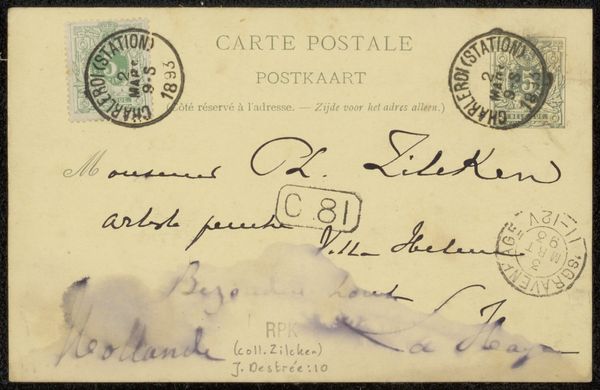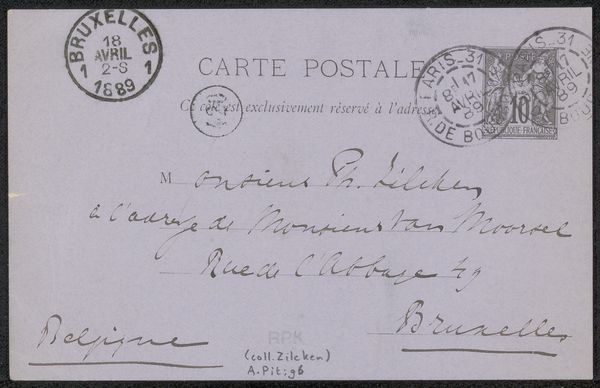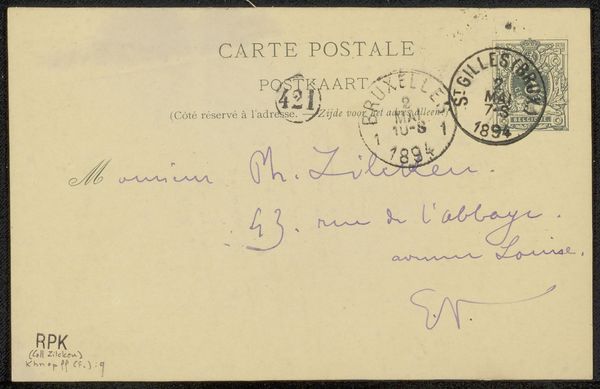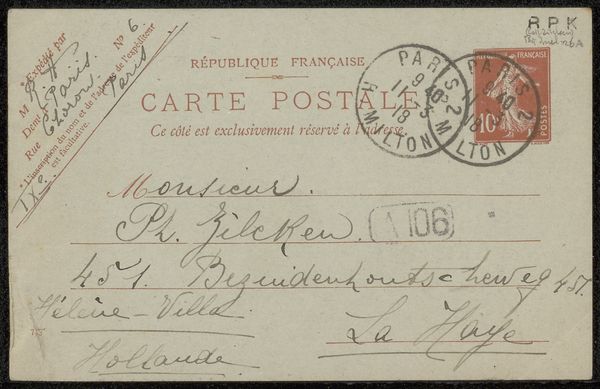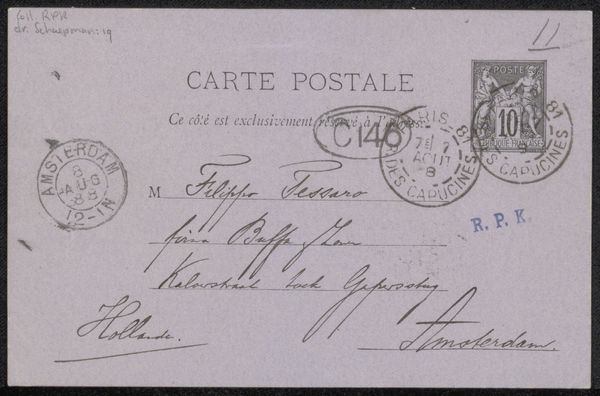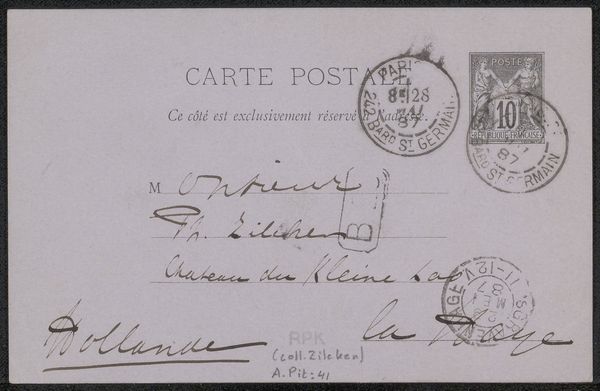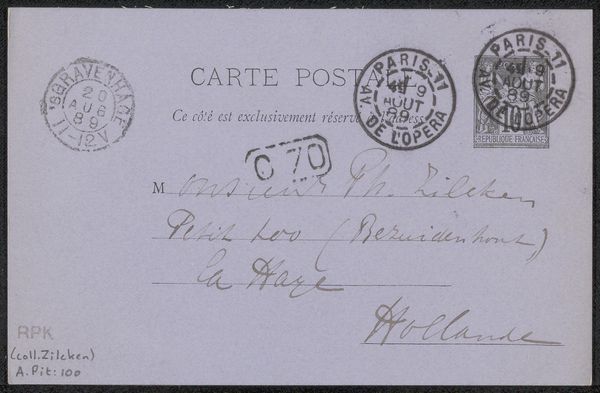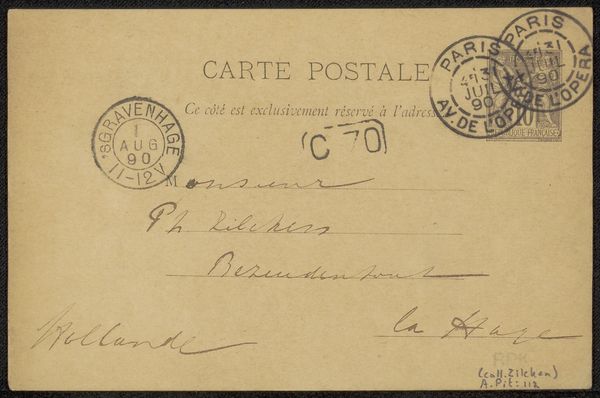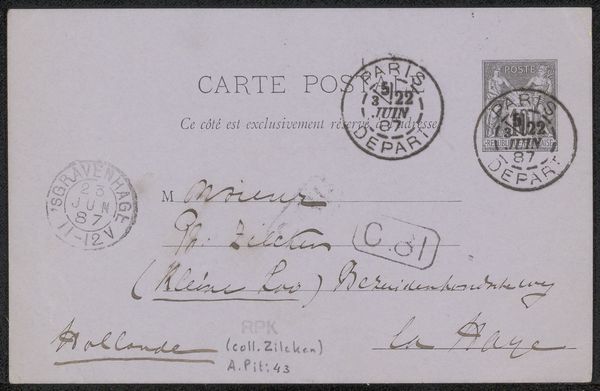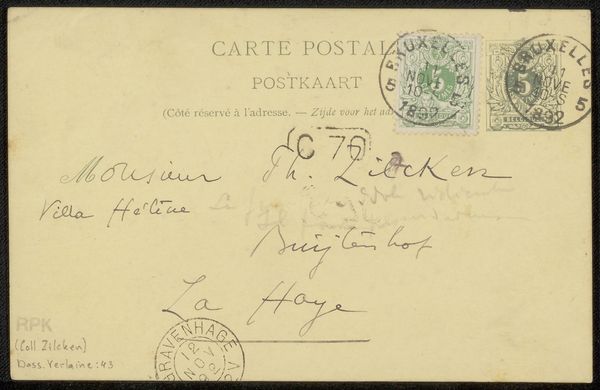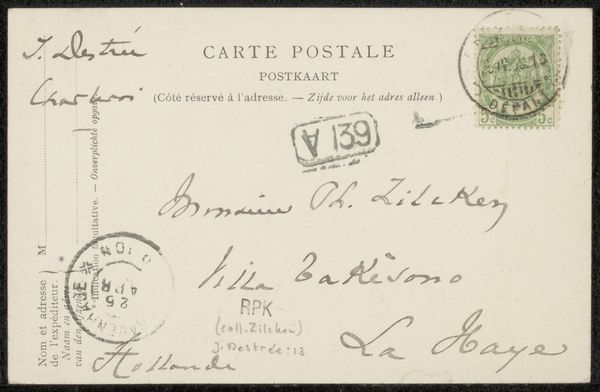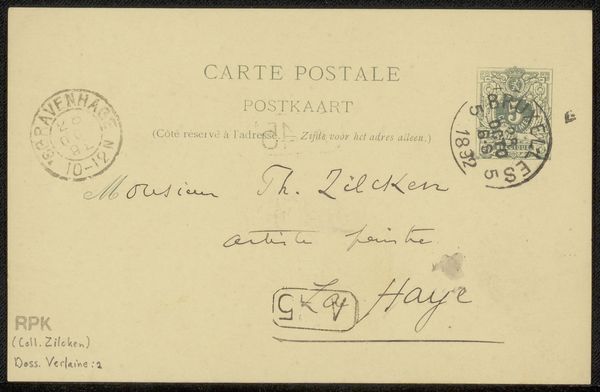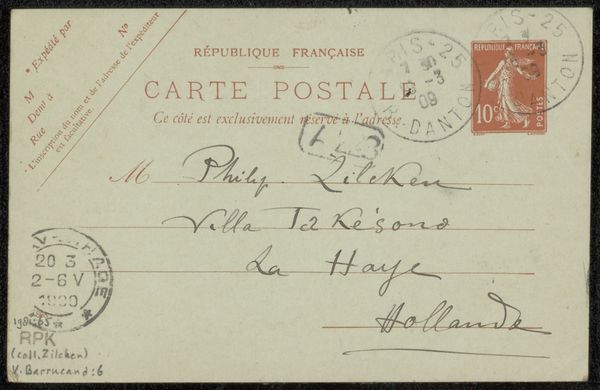
drawing, paper, ink, pen
#
drawing
#
comic strip sketch
#
quirky sketch
#
paper
#
personal sketchbook
#
ink
#
idea generation sketch
#
sketchwork
#
ink drawing experimentation
#
pen-ink sketch
#
sketchbook drawing
#
pen
#
storyboard and sketchbook work
#
sketchbook art
Copyright: Rijks Museum: Open Domain
Curator: Here we have "Briefkaart aan Philip Zilcken," a pen and ink drawing on paper dating from before 1885. It's currently held in the Rijksmuseum. Editor: Immediately, I’m drawn to its ephemerality, its sense of being a transient object. It looks almost like a found object, fragile. Curator: Well, the very nature of a postcard lends itself to that interpretation. This wasn't meant as high art; it's a communication tool, meant to convey a message swiftly and practically. I wonder about the social dynamic between Adriaan Pit, whose profile we associate with this work, and Philip Zilcken, the addressee. Their exchange provides a peek into the art world of the late 19th century. Were they equals? Was there a power dynamic influencing this exchange? Editor: Absolutely. Considering the materials—simple pen and ink, mass-produced paper—highlights the democratized access to communication. Postcards facilitated dialogue across social strata. I see this as more of an exchange between equals than someone creating art and passing it on to the elite or something. This type of format and function allowed ideas to proliferate quickly in this time period. Curator: Indeed. But we also shouldn't underestimate the aesthetic value, even in its utilitarian form. The very act of writing and sending a physical object across a distance signifies a conscious intention. It connects Zilcken to a wider web of influences within his social class and intellectual community at the time. This network acted to sustain their social existence. Editor: I see that. The physical presence implies labor and deliberate actions. There’s something compelling about tracing the lines made with ink, acknowledging the deliberate production of text, as if in the physical expression the idea itself takes on a new dimension that separates it from mere thinking, elevating that particular missive into art. It is in these everyday objects where materiality has the greatest to tell us. Curator: Exactly. By acknowledging its construction as both a commodity of production and also a gesture between individuals, the piece offers rich insight. Editor: I agree. Focusing on its material presence makes us rethink conventional approaches. Curator: Agreed. This postcard embodies how seemingly mundane objects reflect complex social currents.
Comments
No comments
Be the first to comment and join the conversation on the ultimate creative platform.
